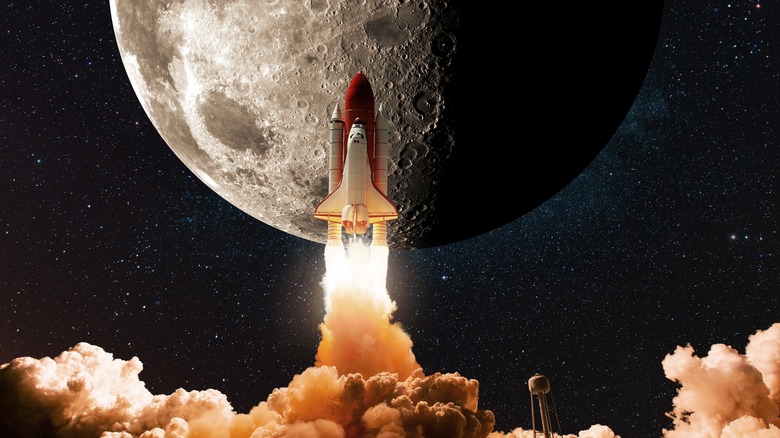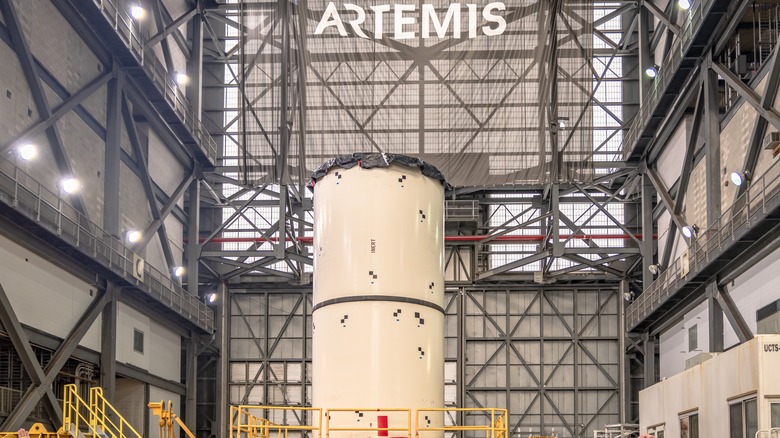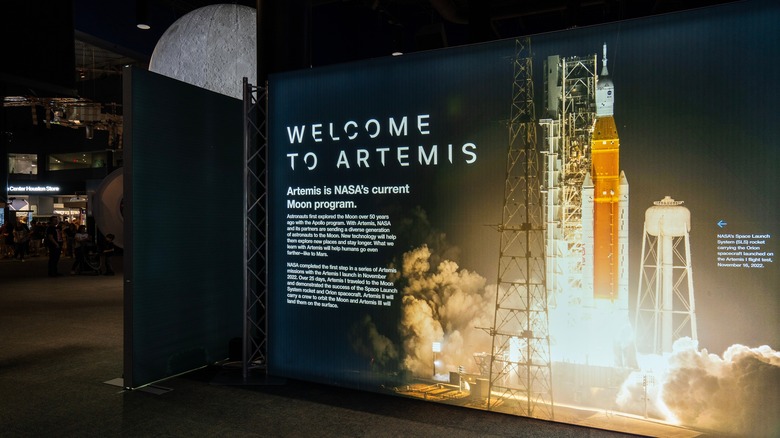NASA Is Already Building Artemis 3, So What's The Holdup With Artemis 2?
NASA has officially begun assembling the Artemis III moon rocket at Kennedy Space Center. Artemis III is the future mission that aims to return astronauts to the lunar surface for the first time in more than half a century, and the announcement, made in August 2025, highlights the rapid expansion of the Artemis hardware pipeline. In fact, the rocket's massive core stage engine sections are already built. This is a striking image of progress toward NASA's long-term goal of establishing a sustainable lunar presence. Yet, even as engineers prepare the next chapter of human space exploration — with NASA announcing the date for the first crewed mission back to the moon – Artemis II has yet to leave Earth.
So here's the big question: Why is NASA building Artemis III when Artemis II hasn't even launched yet? The answer lies not in neglect but in the complexity of parallel development. While Artemis III advances through manufacturing, Artemis II is navigating the final steps of safety verification, technical troubleshooting, and crew readiness. Unfortunately, these tasks have also proved to be more difficult than initially expected.
What's holding up Artemis II?
Artemis II will be NASA's first crewed flight around the moon since Apollo 17 launched in 1972 (albeit one surrounded by questions, with some people wondering if humanity's return to the moon is doomed). It will carry four astronauts aboard the Orion spacecraft on a roughly 10-day journey. The selected crew consists of pilot Victor Glover, commander Reid Wiseman, and mission specialists Jeremy Hansen and Christina Koch. Originally scheduled for 2024, the mission has been delayed to no earlier than February 2026 — possibly even April 2026. The engineers must work through several technical issues uncovered after the uncrewed Artemis I flight. During that 2022 mission, Orion's heat shield performed its job but experienced unexpected erosion, prompting a deep review of how its material responds to extreme re-entry temperatures. NASA isn't taking chances. The shield must survive 5,000-degree Fahrenheit re-entry conditions with human lives aboard.
Beyond the heat shield, Orion's life-support and power systems have faced additional scrutiny. Problems with the environmental control unit (responsible for maintaining cabin air and temperature) and internal batteries led NASA to extend testing cycles into 2025. Meanwhile, ground systems at Kennedy Space Center, including fueling and crew access platforms, underwent upgrades to improve reliability. Each fix demands new simulations, inspections, and certification before astronauts can climb aboard.
NASA officials emphasize that schedule discipline cannot outweigh crew safety. The space agency prefers to stack the Artemis III hardware while Artemis II engineers methodically clear the final test milestones. As Artemis II commander Reid Wiseman explained (via Space.com), "We're going to launch when this vehicle is ready, when the team is ready, and we're going to go execute this mission to the best of our abilities." His words reflect NASA's broader mindset: Progress will continue, but the countdown won't begin until every system, and every person, is fully prepared.
The Artemis III mission in the meantime
As Artemis II undergoes its final checks, NASA is forging ahead with Artemis III, marking a bold step towards humanity's return to the moon. The agency began processing the mission's Space Launch System (SLS) core stage and twin solid-fuel boosters at Kennedy in mid-2025. According to NASA, technicians are already inspecting and stacking hardware components while the Orion crew capsule and European-built service module are being outfitted at separate facilities. The mission aims to deliver the first woman and next man to the moon's south polar region, though the agency hasn't published which astronauts will fill these historic roles.
Artemis III will rely on technologies tested by Artemis I and II, including Orion's navigation system and deep-space communication links. It will also depend on new commercial hardware, notably SpaceX's Human Landing System (HLS) Starship, which will ferry the astronauts from lunar orbit to the surface. Coordination between NASA, SpaceX, and international partners is intense, as delays in one program cascade into another. For now, though, NASA's eyes remain fixed on Artemis II. Only when that crew returns safely can we really increase what we know about Artemis III and NASA's return to the moon.
According to NASA, the Artemis III journey will represent one of the most ambitious feats of engineering and human skill ever attempted in deep space, though NASA also emphasizes the knowledge gained from prior flights. The mission aims to take astronauts to the lunar South Pole, a region of high scientific interest due to its water ice and unique geology. The crew's work there, including gathering samples and various data, will not only deepen our understanding of the moon but also serve to inspire the next generation of explorers, which NASA has already named the "Artemis Generation."


